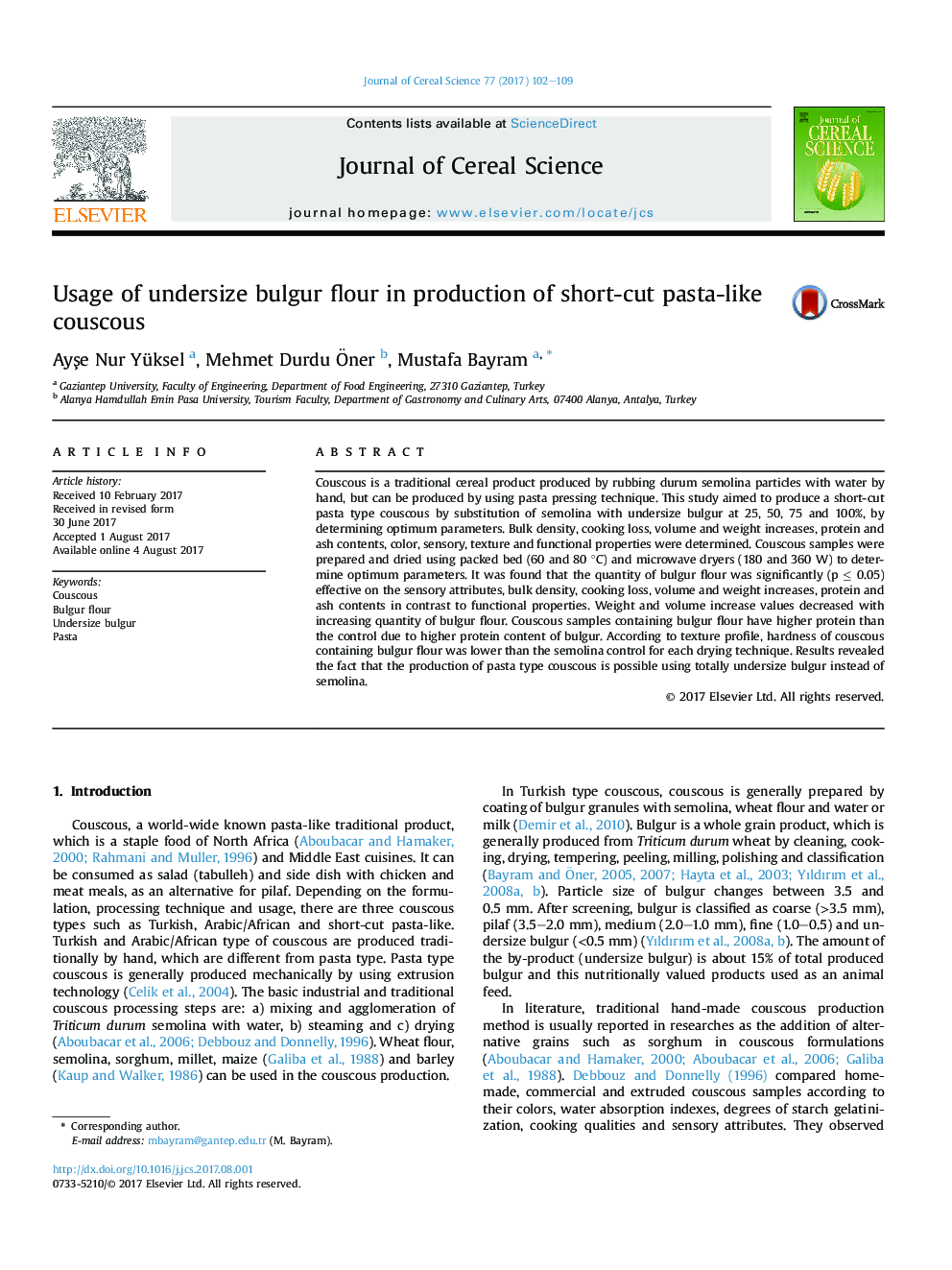| Article ID | Journal | Published Year | Pages | File Type |
|---|---|---|---|---|
| 5762408 | Journal of Cereal Science | 2017 | 8 Pages |
Abstract
Couscous is a traditional cereal product produced by rubbing durum semolina particles with water by hand, but can be produced by using pasta pressing technique. This study aimed to produce a short-cut pasta type couscous by substitution of semolina with undersize bulgur at 25, 50, 75 and 100%, by determining optimum parameters. Bulk density, cooking loss, volume and weight increases, protein and ash contents, color, sensory, texture and functional properties were determined. Couscous samples were prepared and dried using packed bed (60 and 80 °C) and microwave dryers (180 and 360 W) to determine optimum parameters. It was found that the quantity of bulgur flour was significantly (p â¤Â 0.05) effective on the sensory attributes, bulk density, cooking loss, volume and weight increases, protein and ash contents in contrast to functional properties. Weight and volume increase values decreased with increasing quantity of bulgur flour. Couscous samples containing bulgur flour have higher protein than the control due to higher protein content of bulgur. According to texture profile, hardness of couscous containing bulgur flour was lower than the semolina control for each drying technique. Results revealed the fact that the production of pasta type couscous is possible using totally undersize bulgur instead of semolina.
Keywords
Related Topics
Life Sciences
Agricultural and Biological Sciences
Agronomy and Crop Science
Authors
AyÅe Nur Yüksel, Mehmet Durdu Ãner, Mustafa Bayram,
